August 14, 2016
Martha O'Kennon
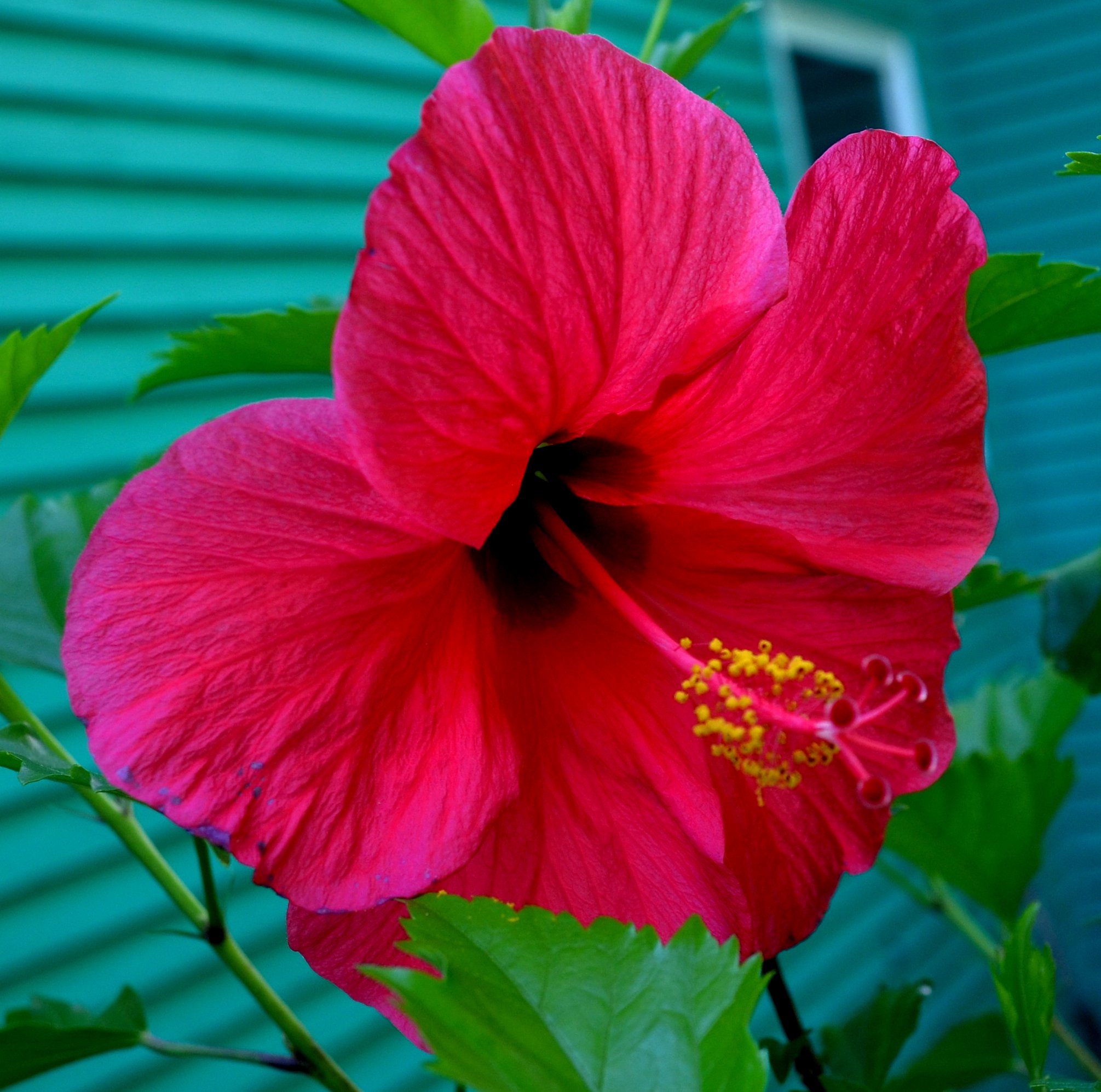
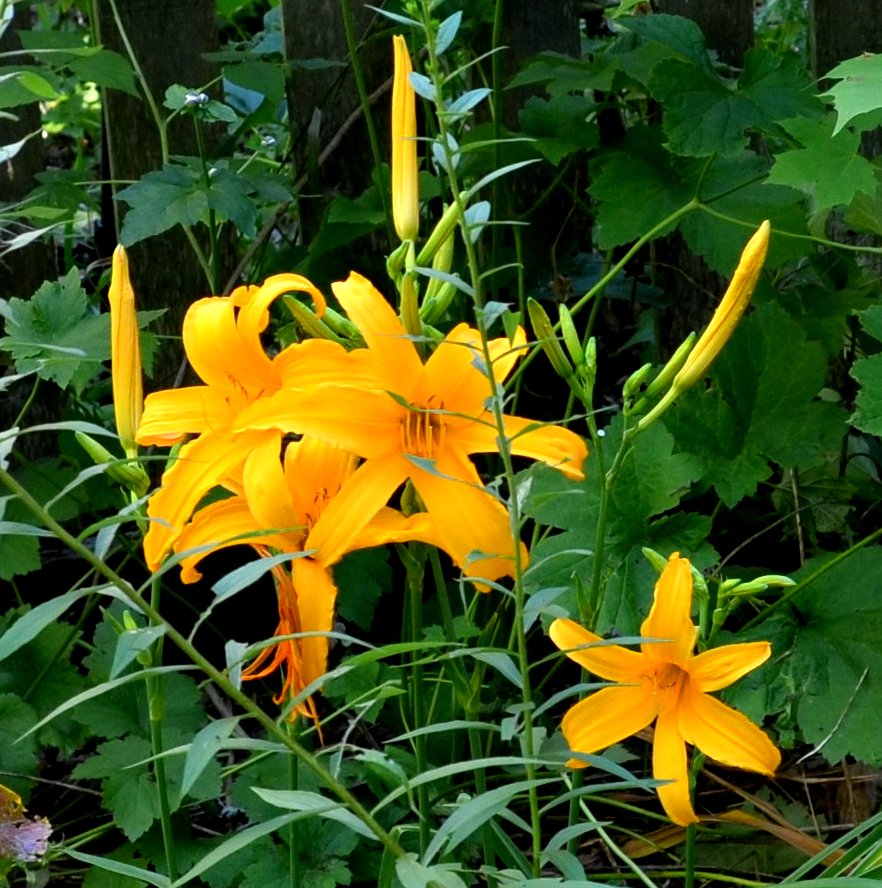
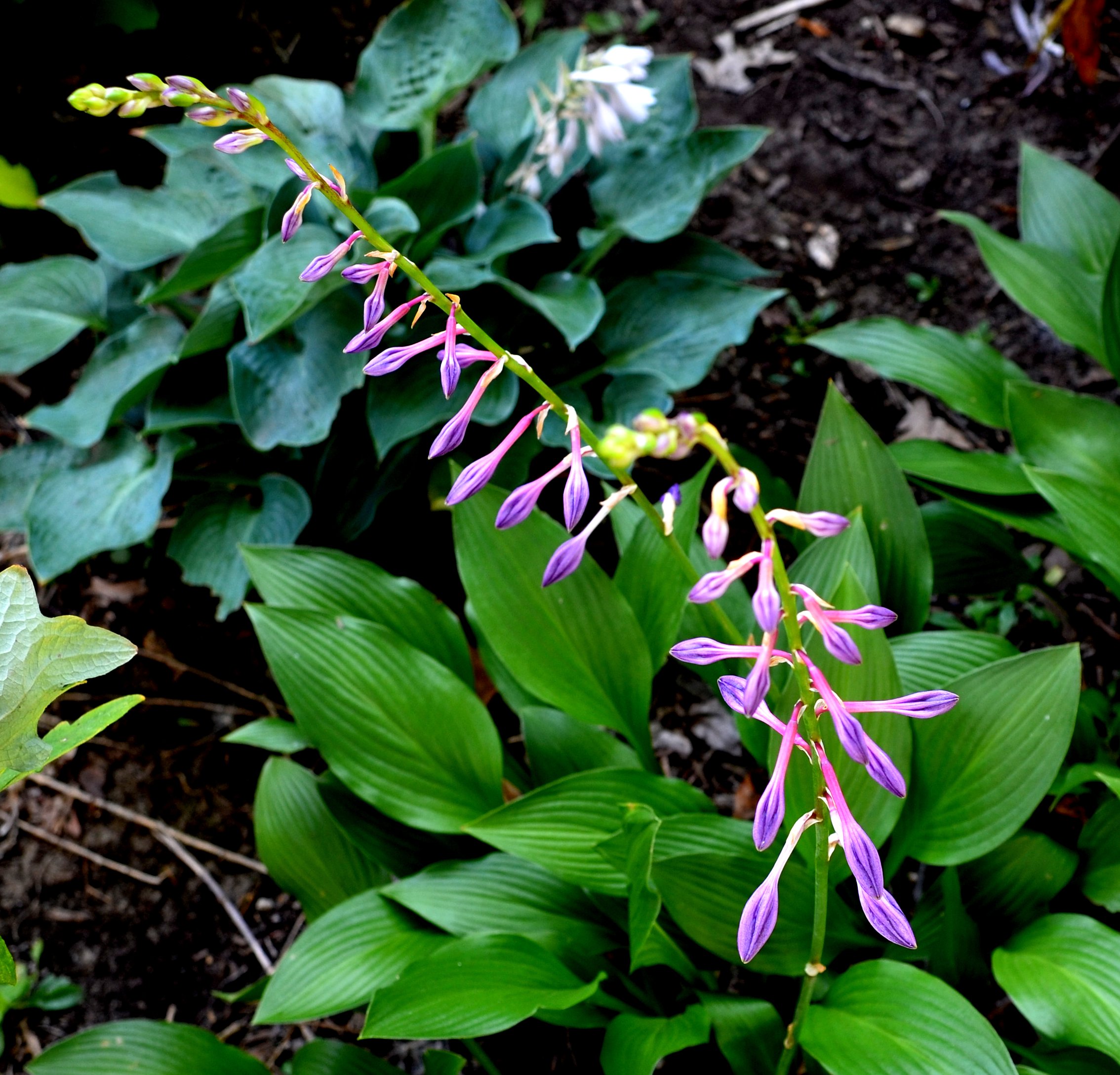
You aren't going to believe this, but it rained yesterday evening. I have been trying so hard to get it to rain - every other day I go out and hose the yard down, at least the side with the hose attached. Everyone knows that as soon as you water the garden, that will be the signal for the heavens to feel too heavy with all that moisture and pour lots of rain down onto us. The other method is supposed to be washing your car, but since I don't water the car I'd have no way to know...
Remember that there is information in the name of the file for each image. You can see it by mousing over the image - look at the lower left of the screen.
I would try clicking on the image. If the little "+" sign appears, it means you can enlarge again. While it is in "+" mode, click on something you want to see more clearly and it will zoom to that section. Then the info is displayed in the address line above. If the image has been cropped
so that clicking on it doesn't result in a larger picture, you can always hit control-plus to increase the size of the image.
The house finches have fledged. This year they made a much sturdier nest than ever before. Two years ago their nest sagged and a couple of the eggs fell onto the porch floor. But this year they got it to balance just right on a tiny triangular outjut (is there such a word?). The only other birds that ever made or attempted to make a nest there were a pair of blue jays who would bring a twig at a time and lay it on the outjut. It would immediately fall to the floor. In their eyes I could see the signal - defective - whereupon they would fly off to the big tree across the street, harvest a beautiful new twig and bring it home to the outjut. Again and again. Finally I pushed a recycling bin (about a bushel's worth of space) and by the time they gave it up as a bad start, the tub would be full of twigs. The next year they did the same thing - to no avail. Hal Wyss used to say that blue jays built lousy nests, and sure enough, whenever I'd find a baby bird who had fallen out of the nest, it was almost always a baby blue jay. But I digress - the house finches did it right this year. The nest was opposite a door on the far end of the porch, so I would always use the one on the near end. But the mother (or father?) would get agitated and fly out and finally I could hear chirping as soon as she left. Now the beautiful nest, still intact, is empty. So good on you, finches! Hope to see you next year! Well, on the topic of nests, here's the nest of the grass spider. She makes a so-called sheet web - no orb structure at all. She can run between sheets and catch anything that rattles the web. See, we aren't the only ones that build. And we have hands, not just a beak like the birdies.
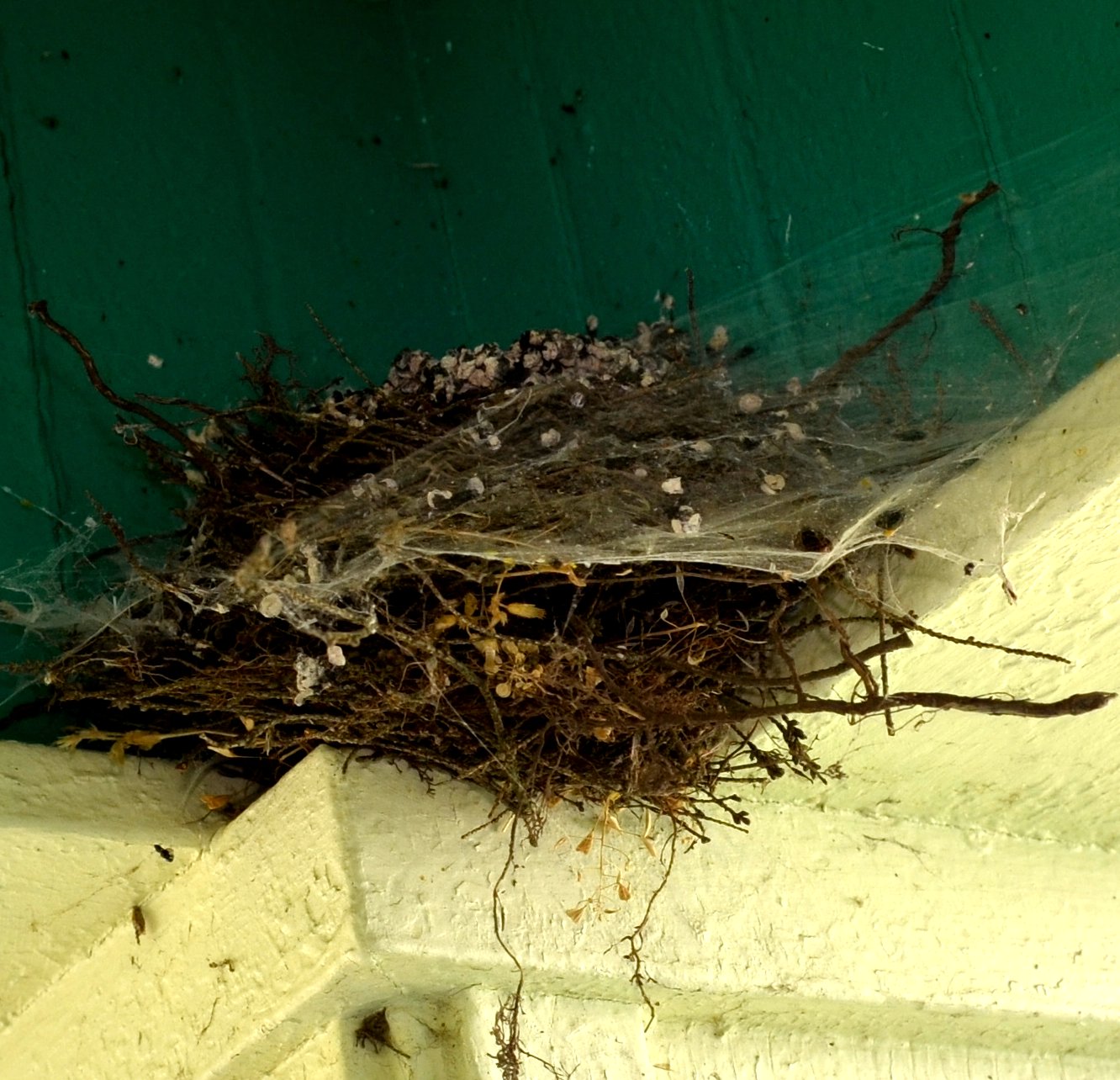
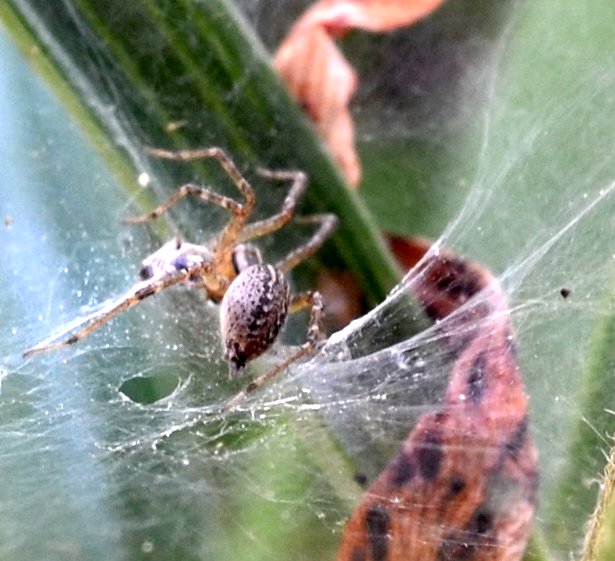
Now back to the alphabetical order! This fairly good-sized ant was running along on the hosta, looking for something to eat, I suppose. Here's another one of an even larger size running along the sidewalk with a huge piece of something (hopefully) edible. Look at how the abdomen seems to be transparent, which you can "kind of" see from this picture. Actually this guy was running back and forth from between my feet with which I was trying at least to slow it down. Silly human! Bees, let's see, there was this one mason bee in a thistle blossom. You can see the pollen already caught on the bottom of her abdomen. Most of them were too fast for me, flying from one blossom to the other, and often discovering all the good stuff was already gone. I can't believe how many blossoms they had - the show is almost over. I hope the goldfinches have been discovering all the seeds, because the ground and plants are covered in a pile of fluffy seed messengers - but not many seeds left.
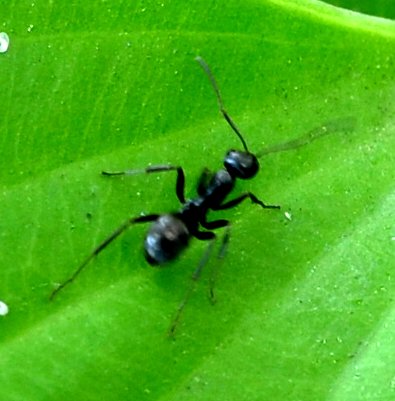
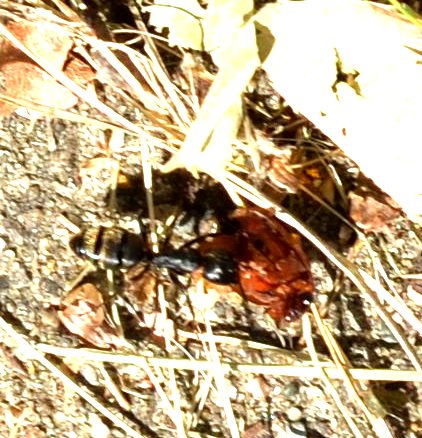
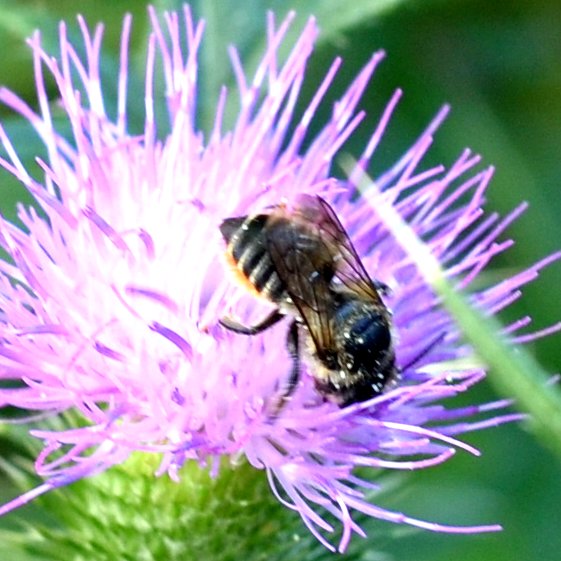
Not too many beetles this week. Just this Polished Lady Beetle with its beautiful face decorations, and this Lily Leaf Beetle at the tip of a lily leaf (surprise!). The truth is, I didn't stay outside so long at a time this week. The assassin bugs are young again. This green assassin nymph is stunning with its bright red eyes.
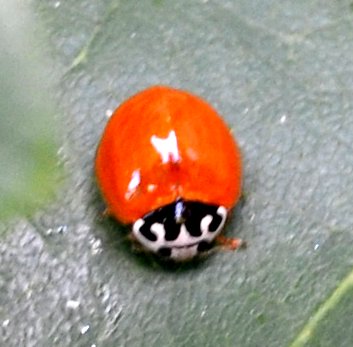
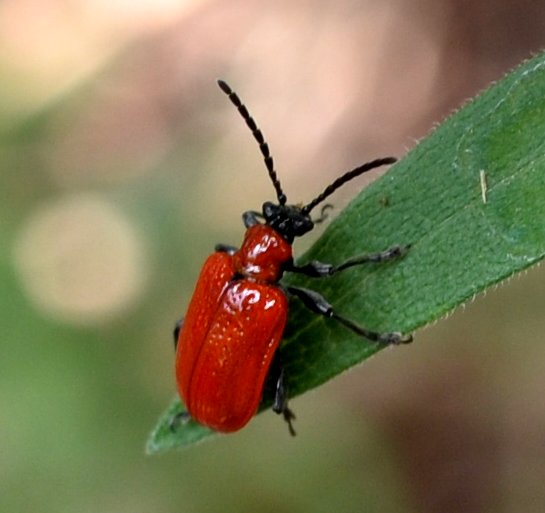
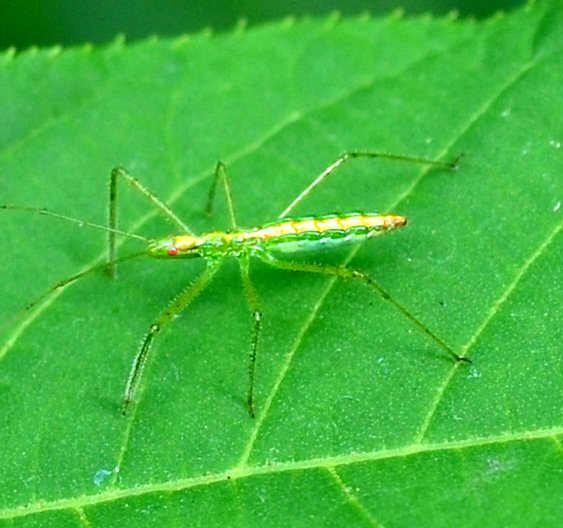
Some people noticed how many fewer leafhoppers were represented in last week's blog. Well, they have become harder to see. But also I had labeled some spittlebugs as leafhoppers. Here is one from this week. (I think.) This first bug doesn't seem to have the spiky legs typical of leafhoppers. So if annoyed, they fly away instead of hopping (and flying once airborne) away. This one had me stumped until I decided to try spittlebugs. One of the problems with spittlebugs is that they take on so many guises (color patterns). These middle ones are two which look very different but are in actuality the same species. (It turns out that Philaenus spumarius likes to take on lots of appearances!) Last is an Alder Spittlebug.
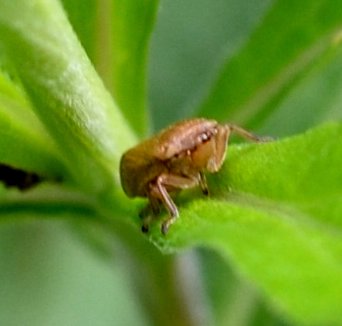
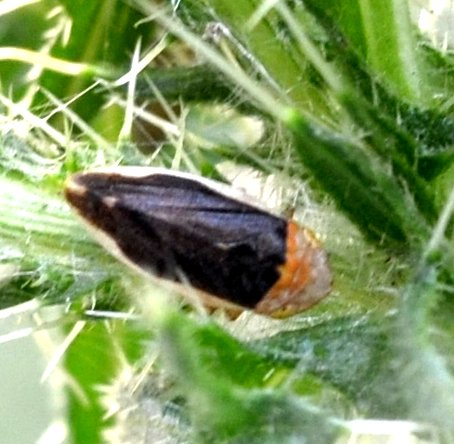
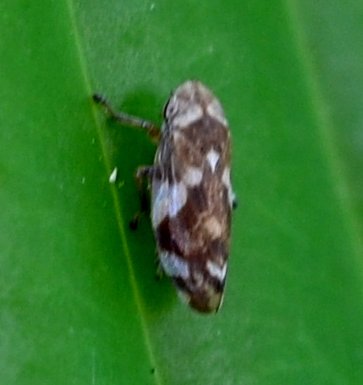
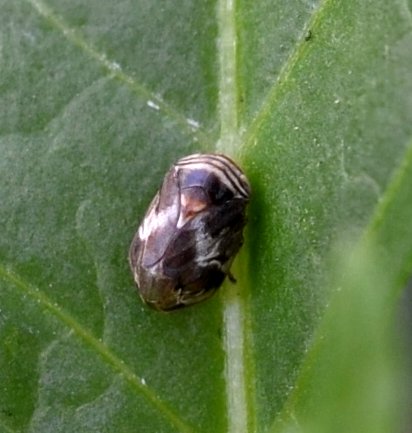
So those three leafhoppers got their badges ripped off their chests, but here are some real leafhoppers! First is the nymph of an almost translucent leafhopper. We have dozens of them. If you walk on the grass in the yard to the north, they leap to escape your footprints. Next is my favorite - the candy-striped leafhopper - in the red and blue pattern. And here - finally - is the adult of the Coelidia olitoria, whose nymphs we have snapped in curiosity so many times! Their green eyes have continued green throughout their metamorphosis.
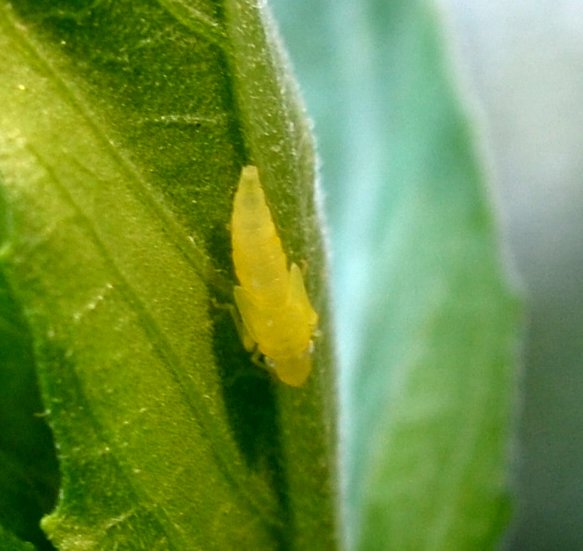

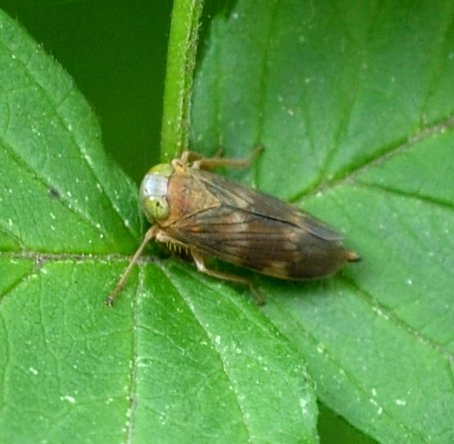
We saw a few more hoppers: that is, a two-mark treehopper on a new redbud leaf; and the white Northern Flatid planthopper, all from last week.
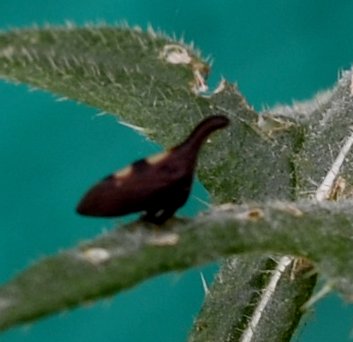
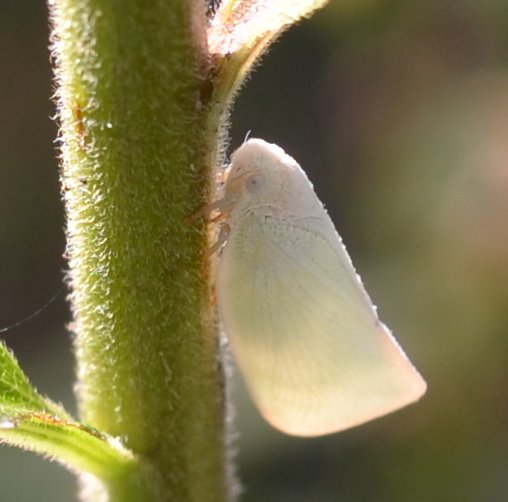
There are still a lot of those little reddish stinkbugs, but now a couple of new stinkbugs are appearing. A new one this year is the "Twice-stabbed stinkbug" which was sitting on a thistle plant. Sorry it was in the shade! Again, number 4 is NOT a Stinkbug but a White-margined Burrowing Bug!
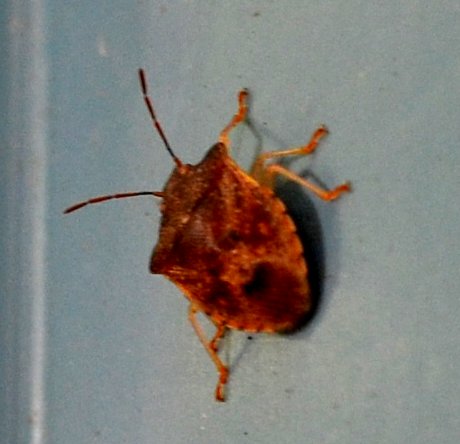


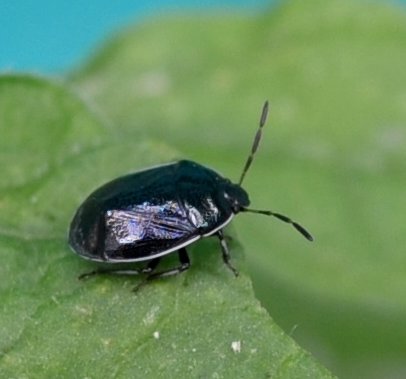
To me, the best bug of the week was this broad-headed Lupine bug. The purplish pink color is real! I'm not aware of any lupines around here. Maybe Dennis Moore will bring some. But we have other legumes. There's the redbud, which may or may not be a host plant for this bug. We also have some baptisia, which is now heavy with pods. This shot is from last year. Flash! A while ago you saw a thing that looked like an ant. It turns out that that "ant" was the nymph of this Lupine bug!
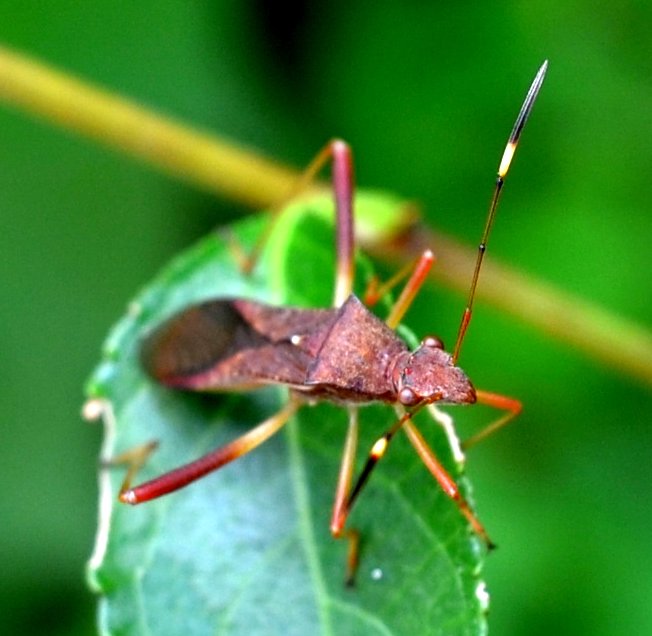
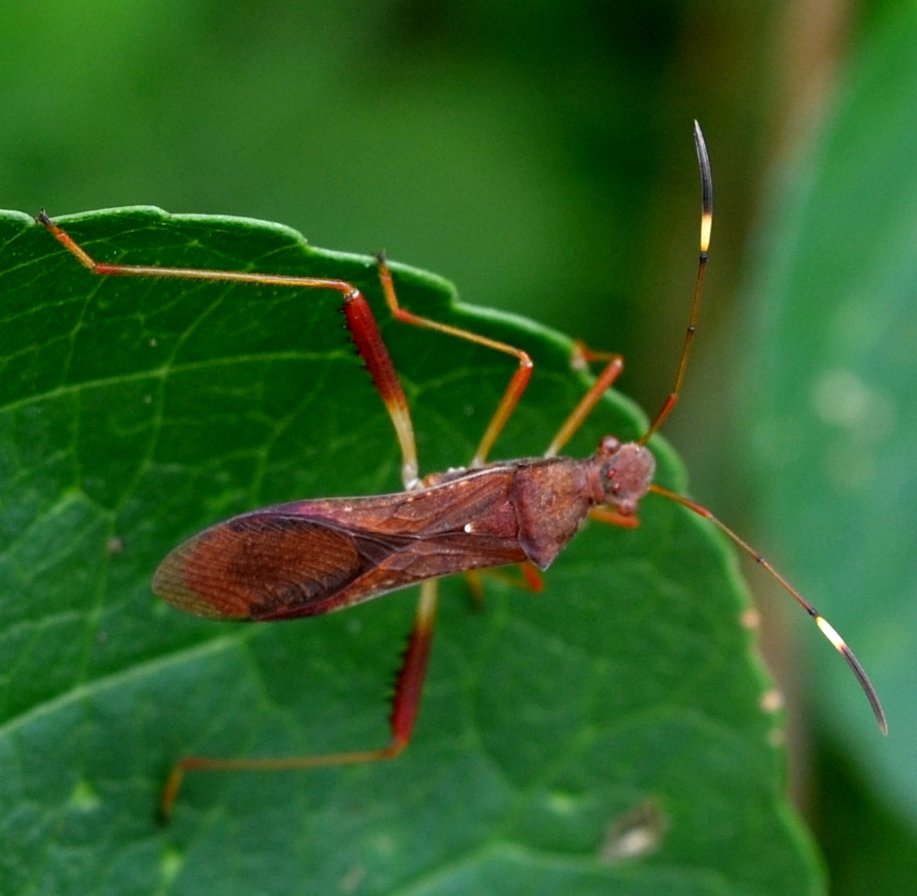
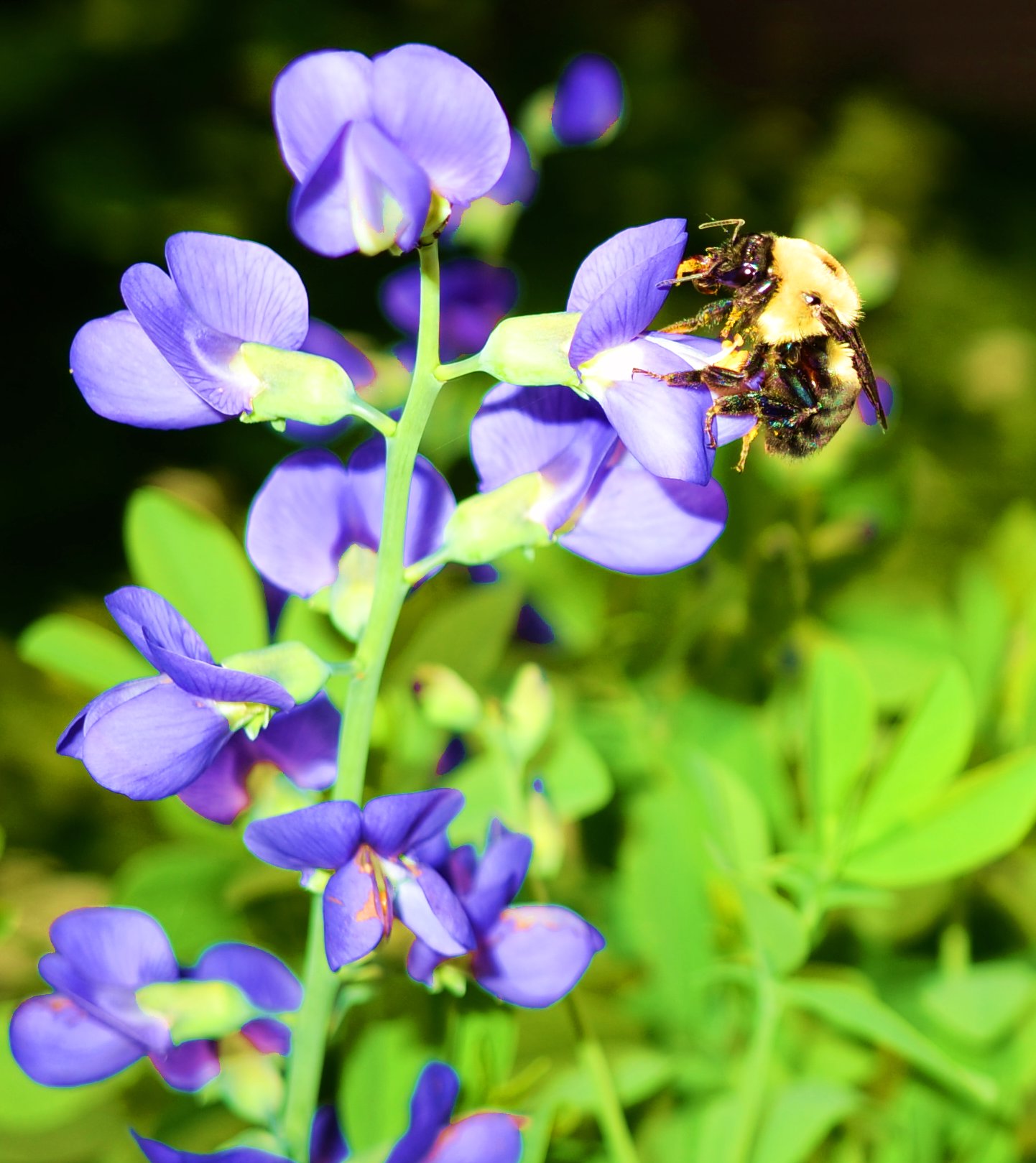
My friend Kathleen called to tell me her parsley was being eaten by big greenish caterpillars. Well, I've had those caterpillars (the larvae of the Black Swallowtail butterfly)years ago when I had a decent clump of Queen Anne's lace, a cousin of parsley and carrots and all sorts of things in the carrot family. What a good surpriseto see them again! So I went over and was blown away at this beautiful and beautifully tended garden. Lots of things butterflies like to visit. While we were standing there, a tiger swallowtail swooped down onto the gorgeous purple butterfly bush. And a minute later a huge black-blue swallowtail sailed past. Since I've also seen this butterfly flapping past my garden, I'll give you a link to both of them. Here's the black swallowtail. and this is a link to the spicebush swallowtail.
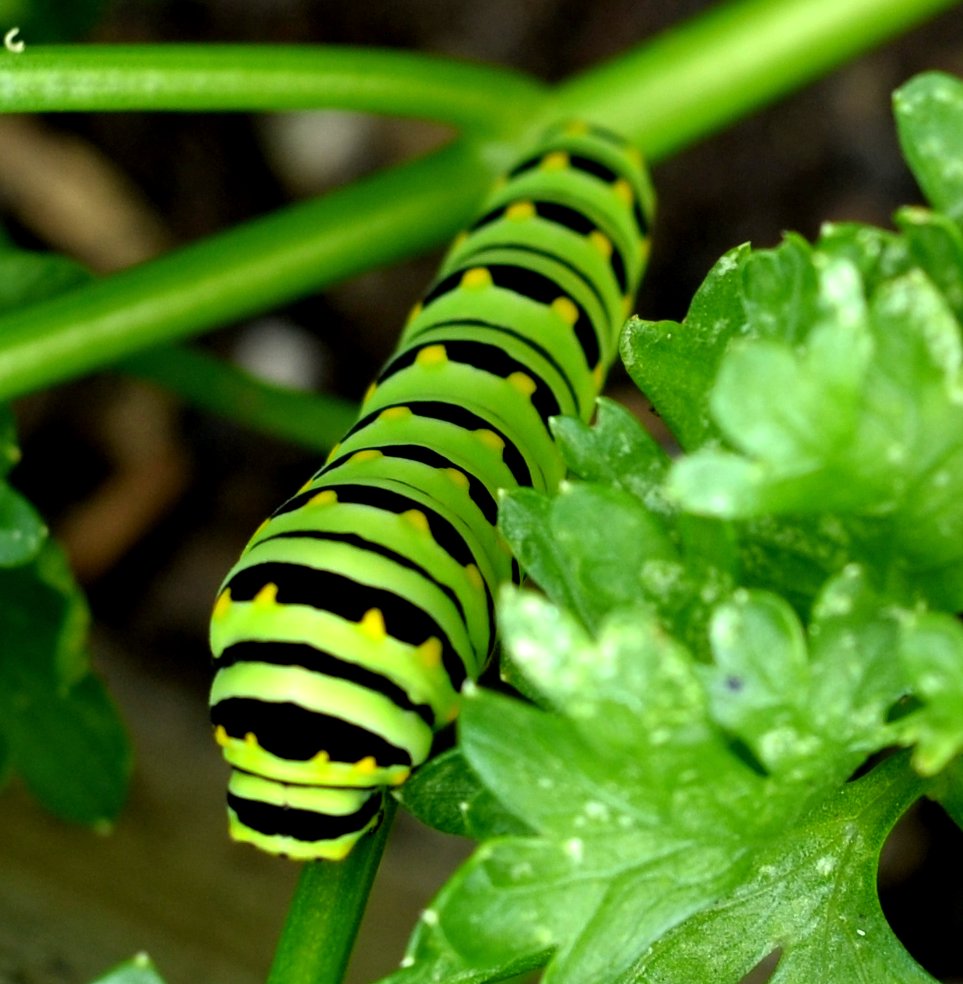

We had one damselfly and one dragonfly this week. This lovely damselfly is an Eastern forktail (Ischnura verticalis) female, and it was found at my friend Pam's house. I hadn't seen one of these beautiful red-patterned damselflies in a year. And we are still seeing these smallish Autumn Meadowhawks. I forget each summer that we have to go through a few weeks of these somewhat smaller dragonflies before we start to see the larger ones. (Are there two phases, small and large, or do the dragonflies continue to grow after parting with their larval life?)
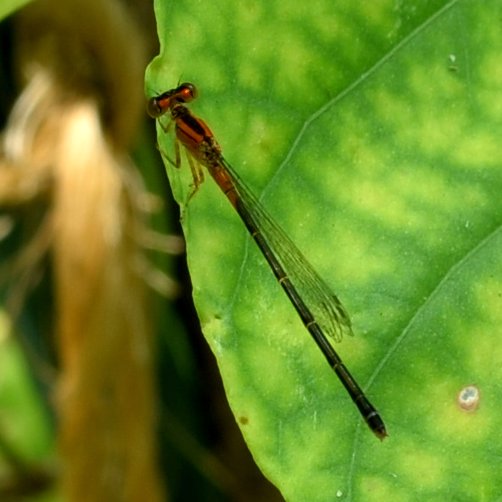
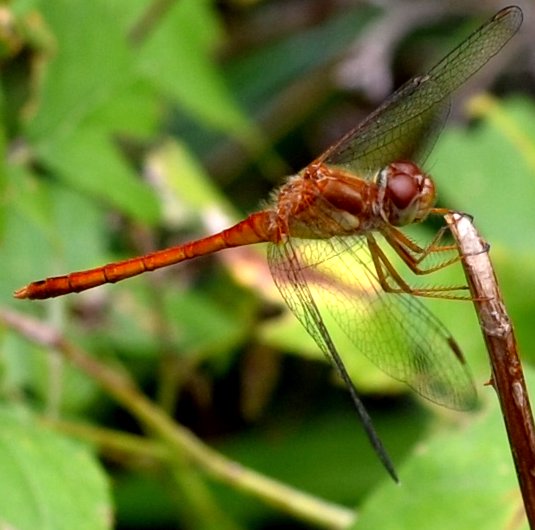
Now that we're between dragonflies and flies, let's take a look at the pond. Here are most of the 10 fish that survived from last summer (all of them). Mating has been taking place but I've been looking at other parts of the yard. The female fish lead the males a merry chase before laying their eggs and allowing the males to deposit sperm on them. So far the only one I've seen leading the pack is Fanny, the mother of many of the 10 fish. Here you're seeing the fish as the sun comes across and makes the mist glow. Fanny is to the upper right. I know when mating has taken place because suddenly all the fish are diving into the plants and eating baby fish as fast as they can. So for a baby fish to survive its parents it has to swim fast or linger in places that are too shallow for Mom and Pop to swim in and devour them. Image 2 is a tiny baby fish, less than 5 mm long, with its shadow on the bottom of the pond. And image 3 is a magenta water lily that has bloomed well this year. This pond is the center of the life in the yard. So many animals live in it or come to it for food or grow up in the pond. Ironic that they try so hard to populate the water, but end up chowing down on their fry (baby fishes) so that each year about now they are very very few - usually one or two get past Mom and Pop.
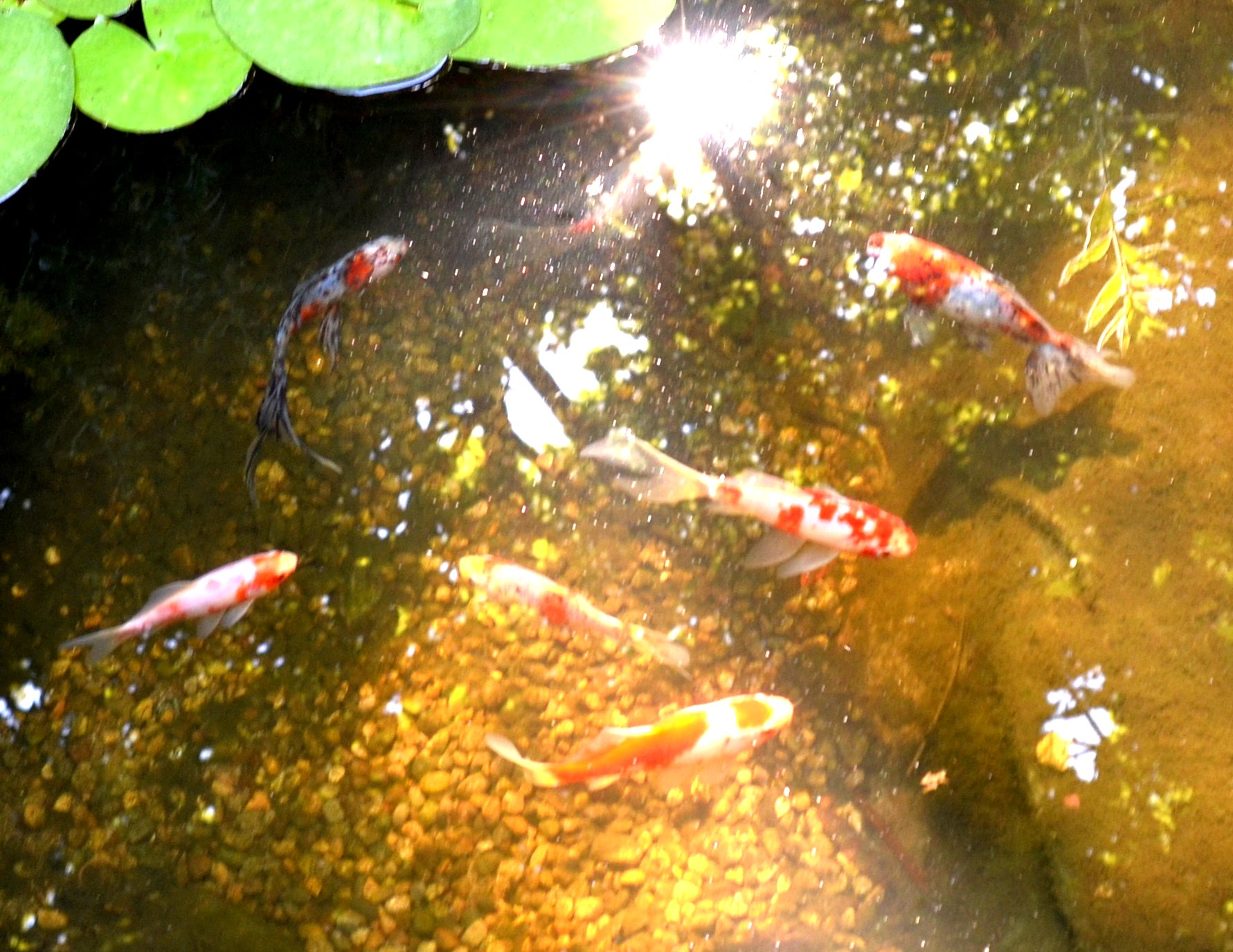
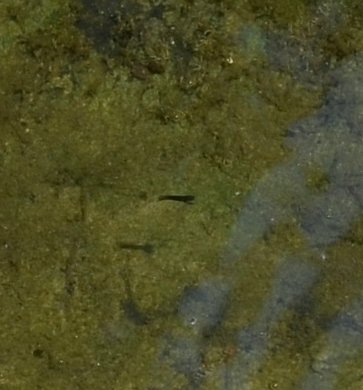
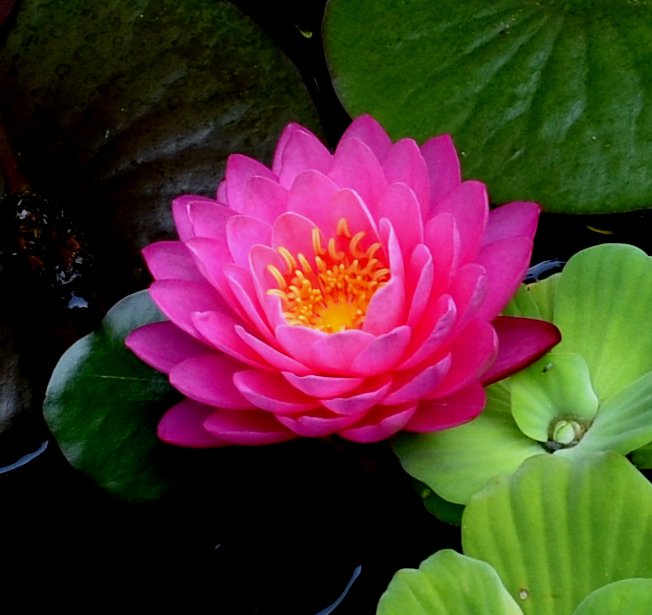
No matter where I go, my eyes seem to fall upon a tiny grey tree frog. And my feet seem to fall about an inch from a tiny baby toad. Even sometimes when I'm focusing on one thing, like this baby Coelidia olitoria, a little tree frog insinuates itself into the frame and I only see it when I'm cropping or, in this case, not cropping.
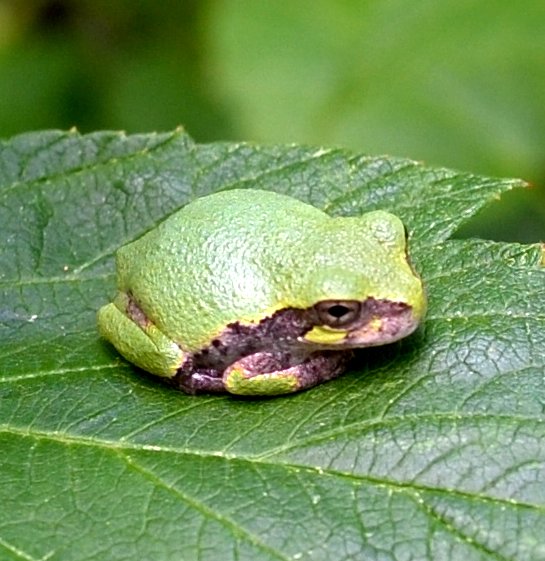
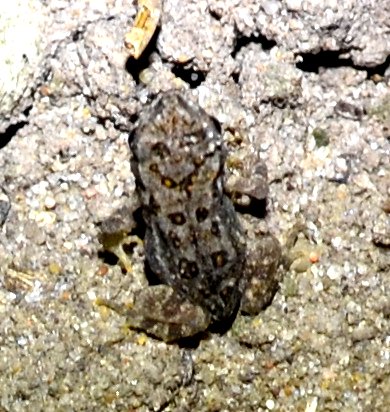

So now can I start with the flies? This big green one (blow fly or greenbottle) apparently is a carnivore. I've seen them before finishing up a bit of meat litter and yesterday I saw one eating a smaller bug. I broke down this morning and finally looked up the definition of Calyptratae - it means the antenna has a tiny bristle called an arista - in this one, the aristae are white. This third fly I found on the floor of the gym and ever so artfully posed it on a zinnia. I love this eyes-first image.
This gorgeous fly turns out to be a Compost Fly!
-- Lucilia 8 10 16 1.jpg)
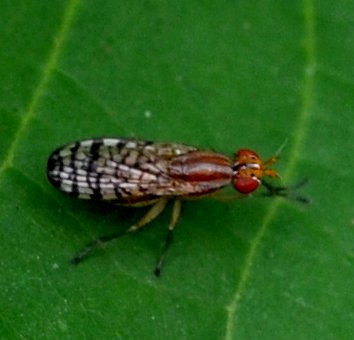
-- Meromyza 8 12 16 13.jpg)
-- Meromyza 8 12 16 14.jpg)
Another of those gorgeous long-legged flies. And another type eating something spherical. Here's a new midge - yellow-green and a male (fluffy antennae). I hadn't seen a midge in a long time or maybe there were too many other flashy bugs taking my attention away.
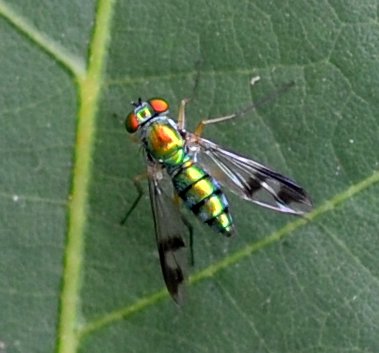
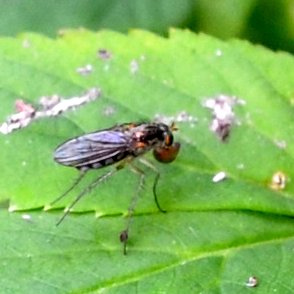
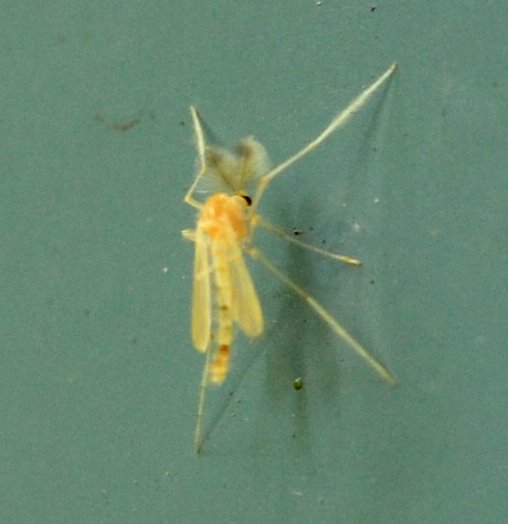
Here's that black mystery fly again. And another mystery - if you can zoom clearly you'll see its yellow parasite. And another Scorpion fly. The red color in this scorpion is an exaggeration from the original orange and black. Its tail is unfurled - maybe this is a defensive posture? December 17, 2020: It turns out that both picture 1 and picture 3 are examples of sexual differences. Picture 1 shows a Female Woodlouse Fly (Melanophora roralis). Remember the one above a bit with all the pretty colors? That was Mr. Woodlouse Fly. OH! The Male shows up again in the next row of pictures. The Scorpion Fly only coils its abdomen if it's a Male, so this is a Female.
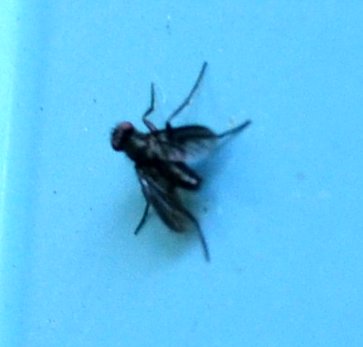
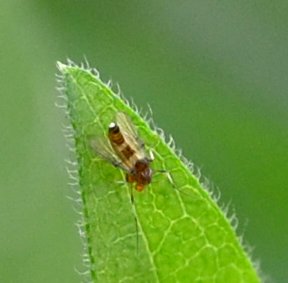
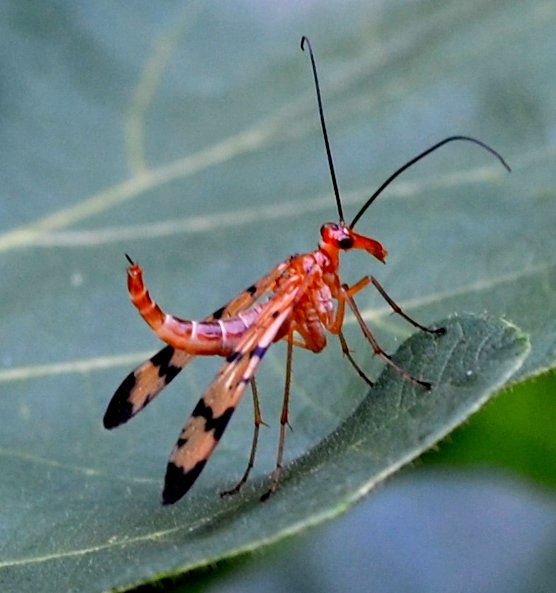
This very fat fly seems very new, but when we look at it from the back, it turns out to be another of those Chrysopilus flies. See text in above paragraph.
This last one looks like a pint-size flesh-eater (Sarcophagus).
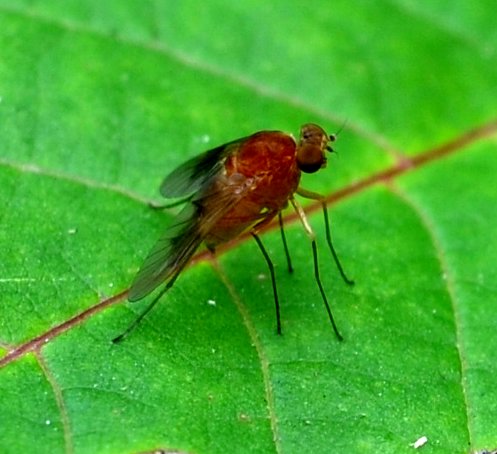
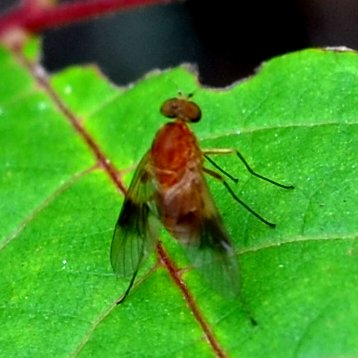
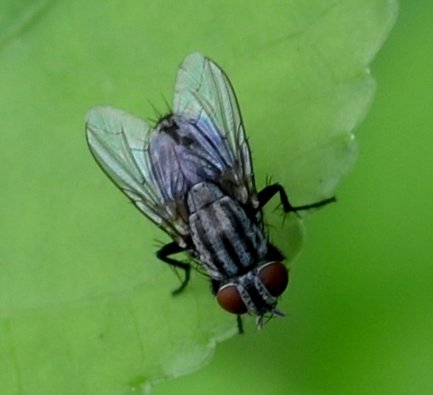
Here are some Harvestmen. Make sure to click twice to see the body more clearly. I hate to crop off those impressive legs!
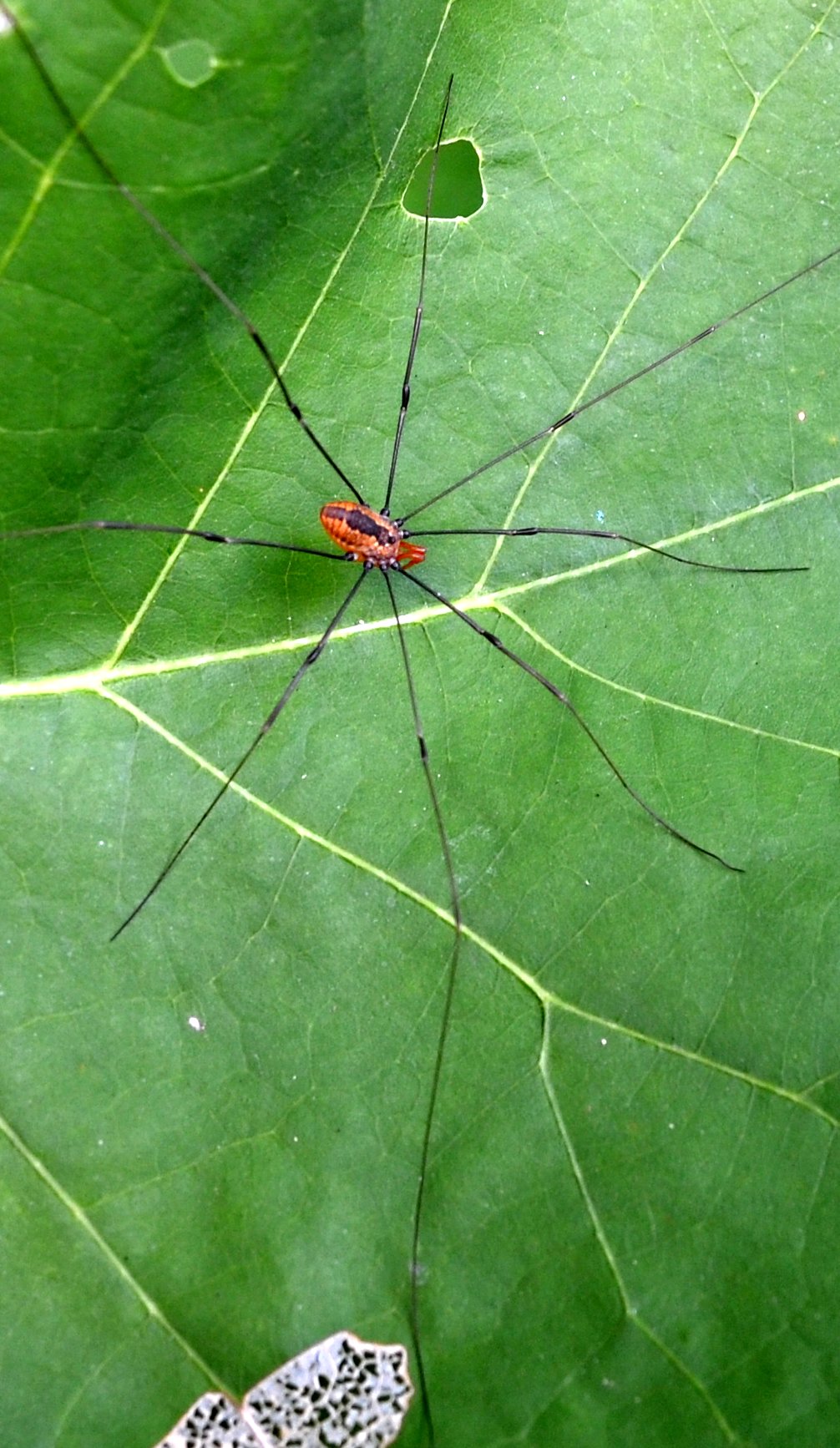
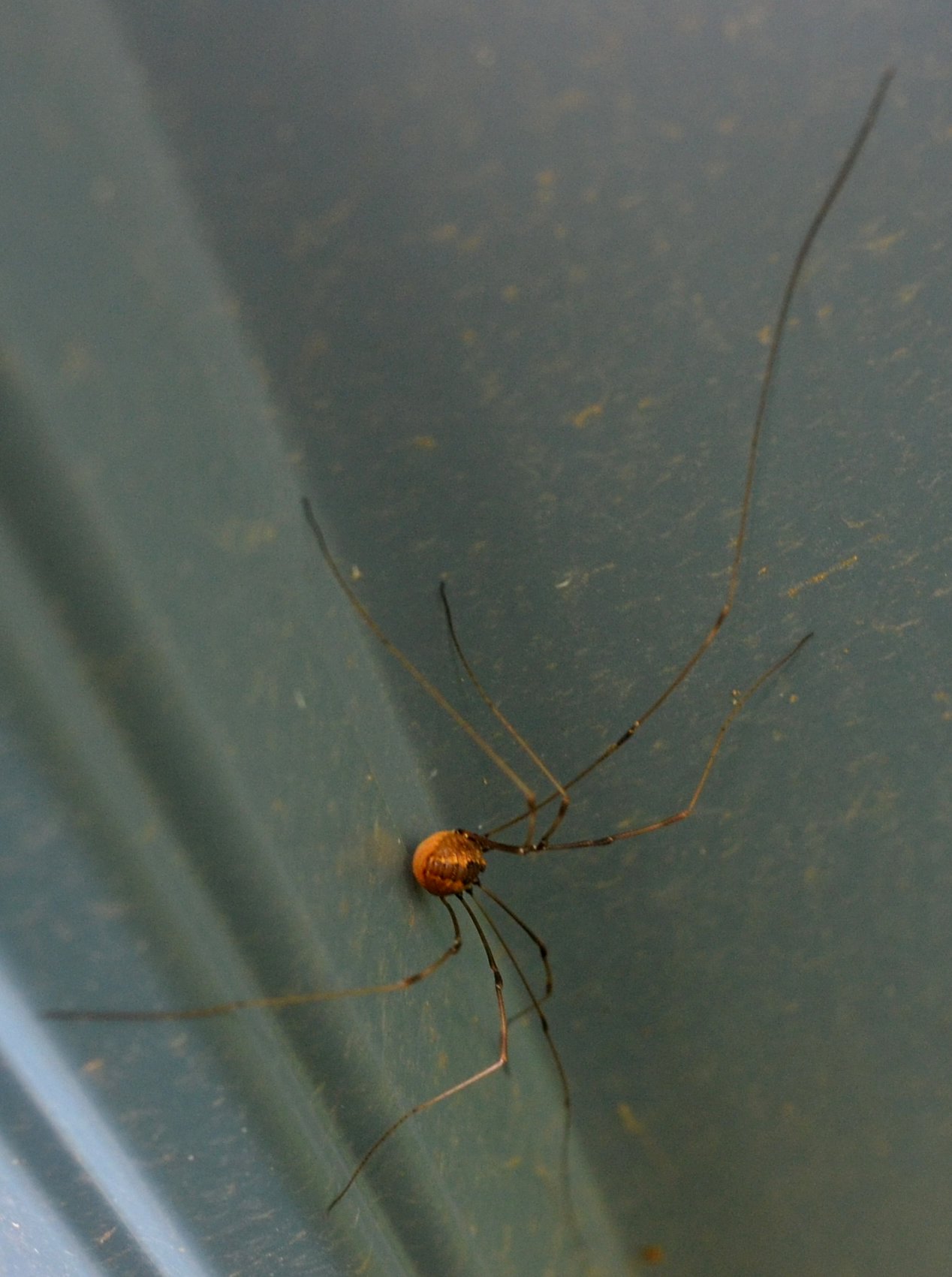
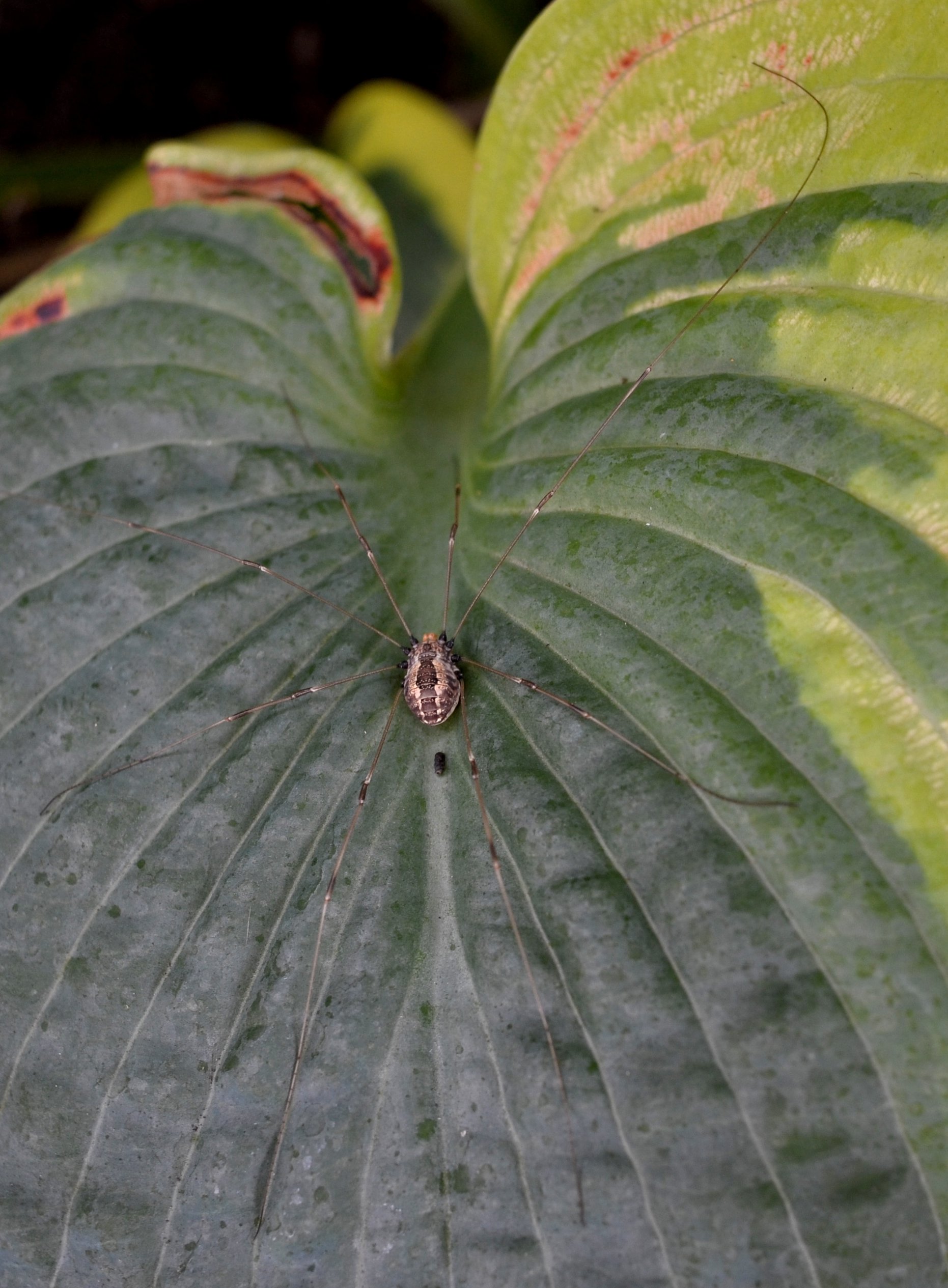
Let's look at some more pretty flower or plant pictures. The summer, though hot and humid for us humans, seemed to tickle an itch in the world of flora. Once more and larger, the bud of the "dinner plate" hisbiscus flower. This hosta with its blue leaves and prolific flowers is a refresher for the eyes. And counting down to blooming, some of the buds on this goldenrod stem seem already to be getting yellowish.
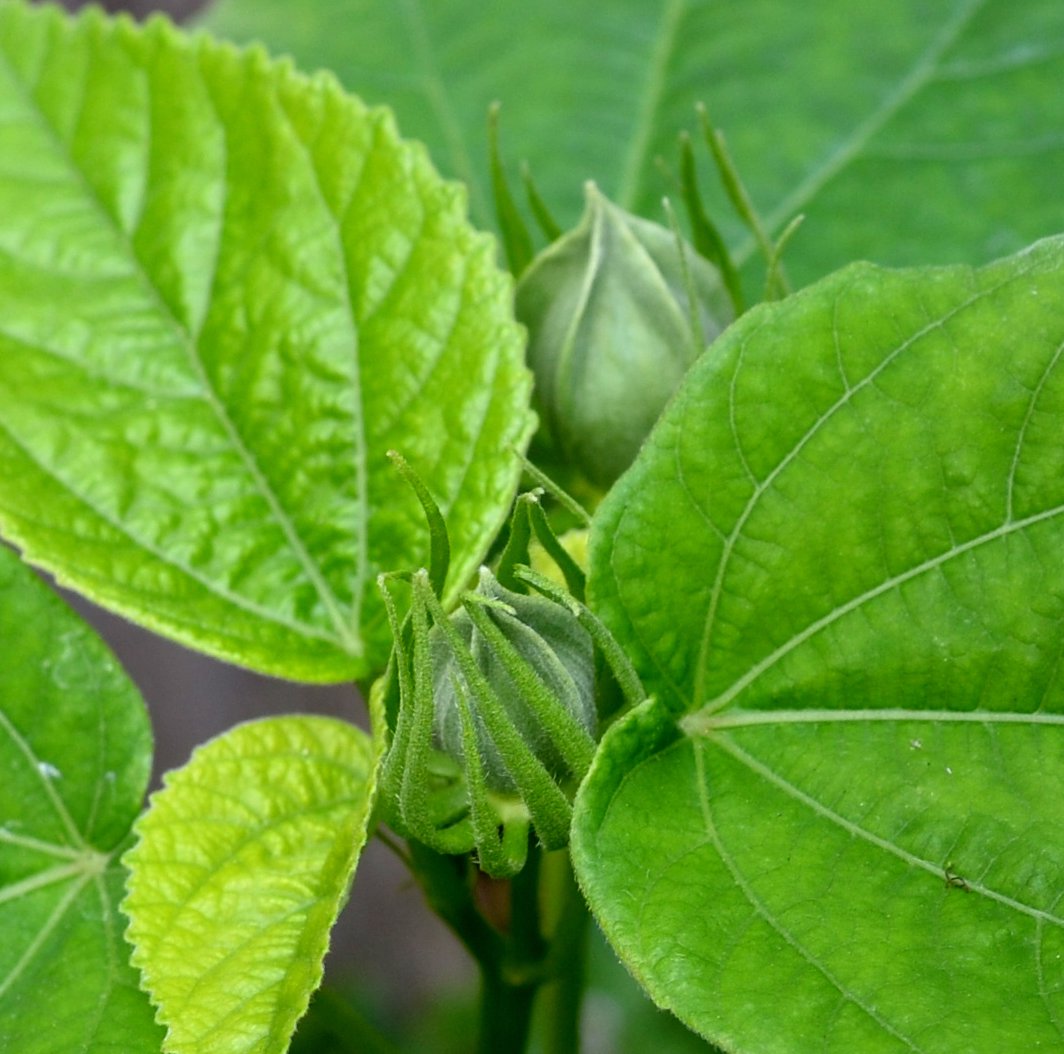
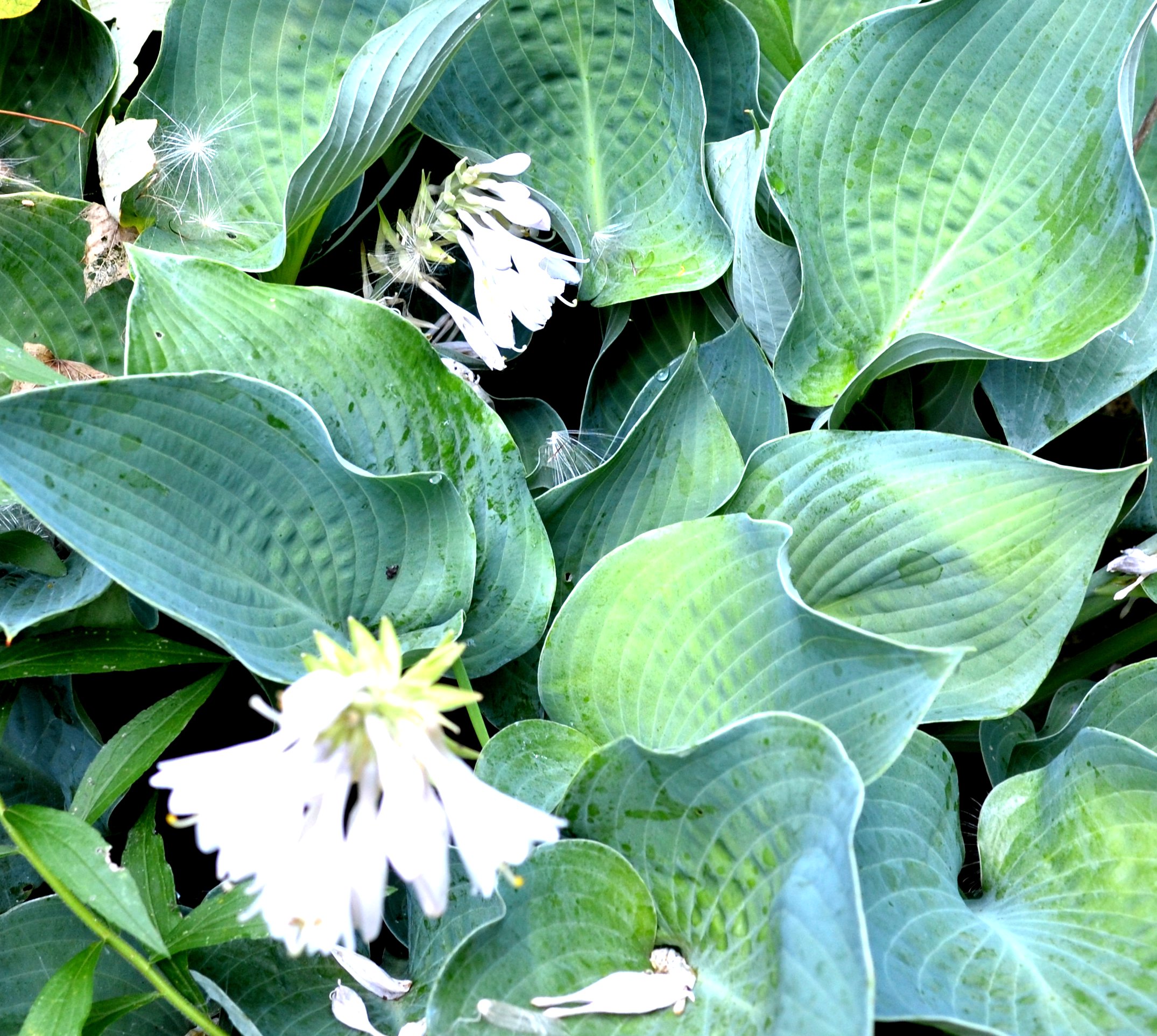
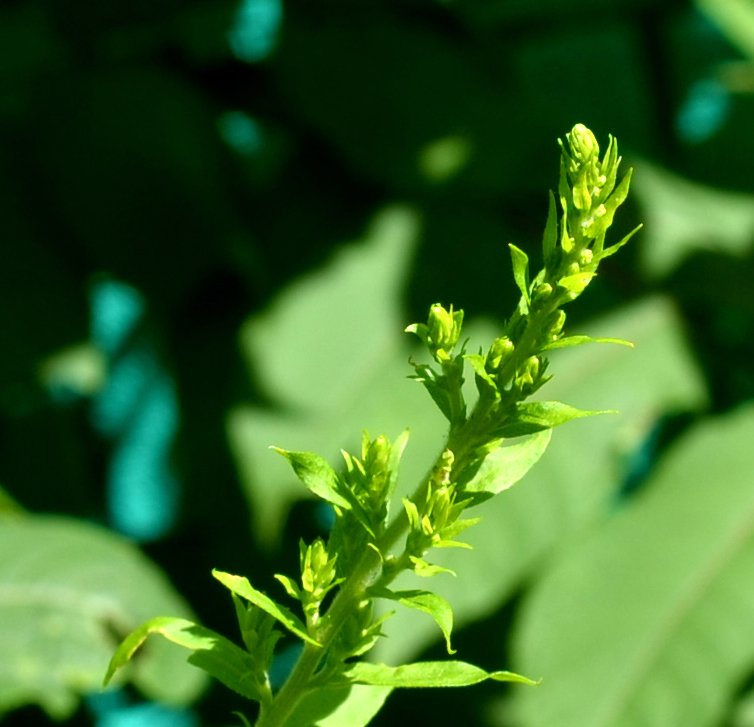
Remember those ichneumons? They're in the same order with the wasps, bees, ants and sawflies. You can spot the females - they're the ones with the gynormous ovipositors. First a medium sized one, then a terrible picture of another. Does it seem to have one of those bright-red parasites? Finally the piece of resistance for the day, a huge female ichneumon somewhere between two and three inches long! The ichneumonologist suggested that I get so many ichneumon and braconid wasps could come from a dead tree and then I remembered that old spruce stump (the tree fell in 2007 and so it is rotting nicely). Apparently dead wood means wood processors, like some beetles, and these previously unseen beetles are a favorite on the menu for ichneumons.
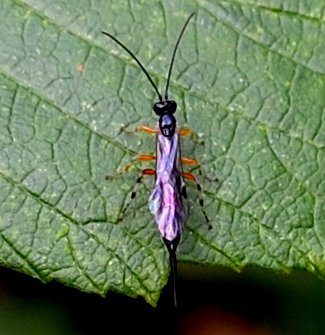
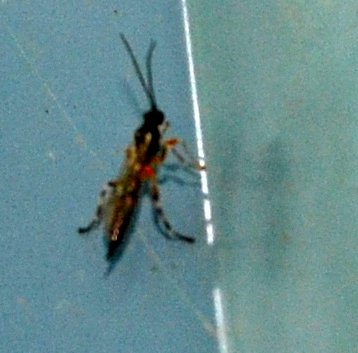
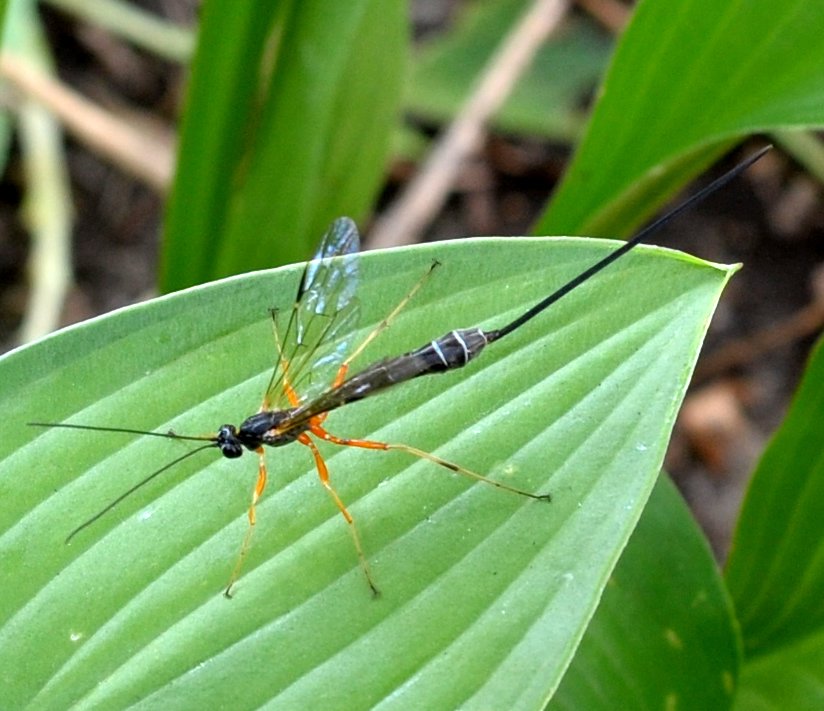
We still have mayflies, whose larvae love little insects. Here is one tiny one hanging on the workshop siding. Then comes another the same size. I'm beginning to think the ones that hang on the shop are the empty shells of ones like the one on the chair. This giant one was alive at the gym the other day, so whatever I'm posing it on may not be the kind of thing they like hanging onto, just a stage prop.
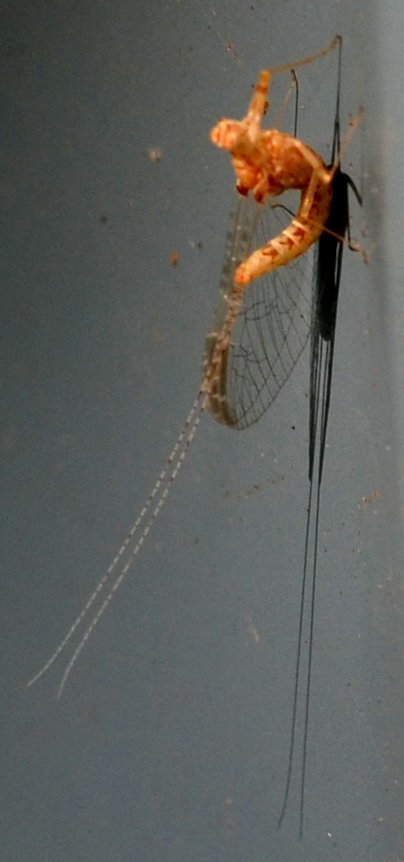
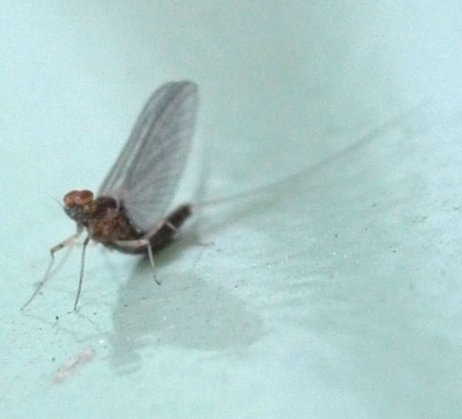
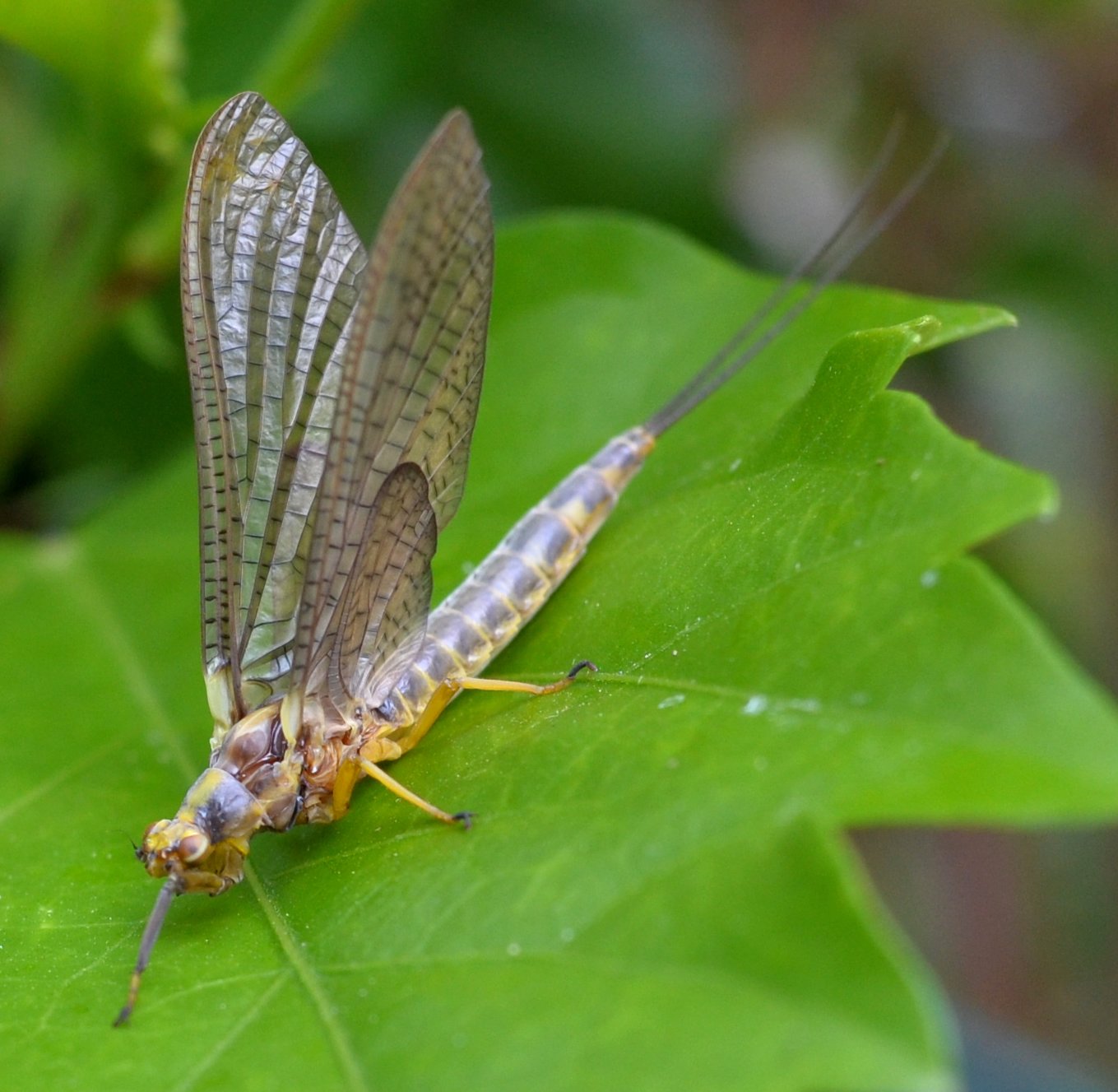
Three kinds of moths showed up this week. The first we have seen a few times in the last couple of years. The second is a real mystery, but the third is probably one of those leaf miners. There are quite a few more but they are so good at getting away I don't have any pictures of them!
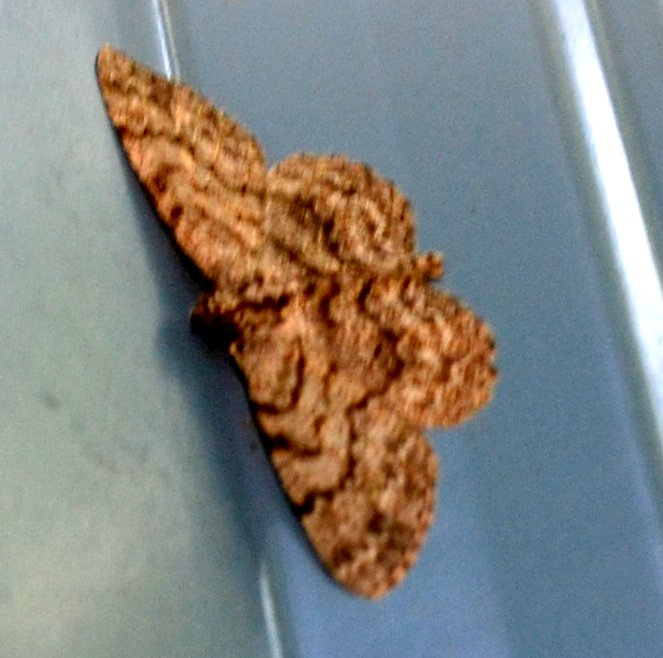
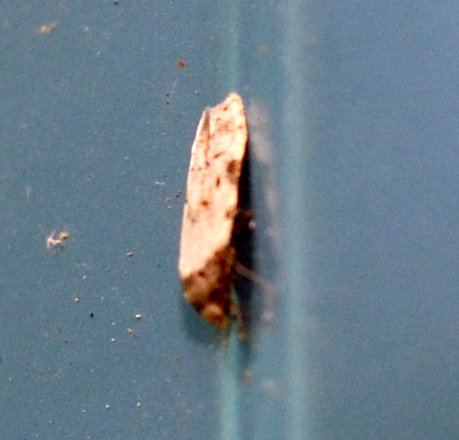
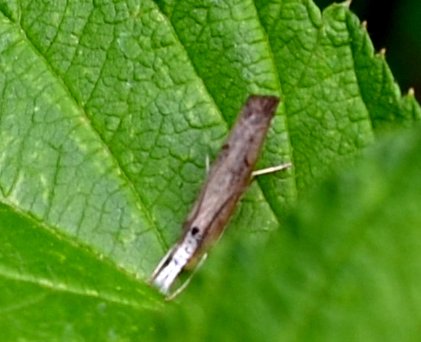
I thought that when I cleared some tall walnut saplings from the garden, that some of our Orthoptera went missing. But no! First off, while at Kathleen's house, we spotted this black and white grasshopper, which is actually the Red-legged Grasshopper when it is an adult. Then when I was watering the other day, this other grasshopper, which I think is a "differential" grasshopper, hopped out of the way. In that same watering effort, one of the katydids I'd seen as a nymph last week, or at least in the very part of the yard I'd seen that one as, hopped to safety from the water. She now seems to be an adult forktailed bush katydid.

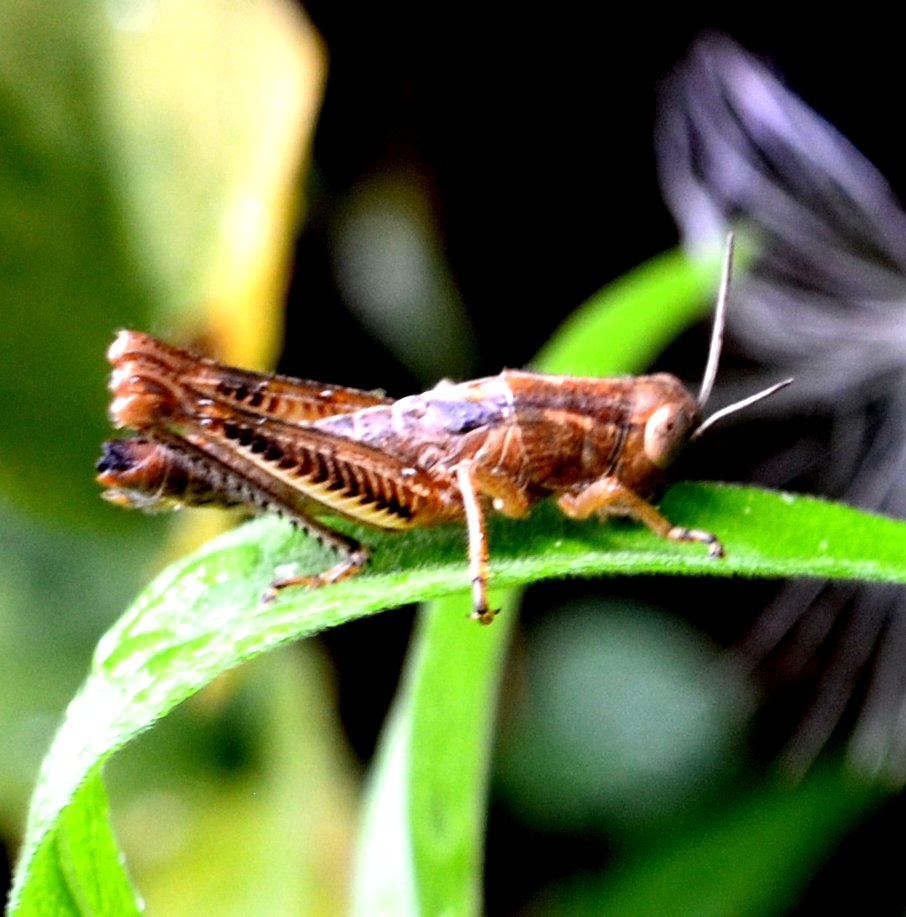
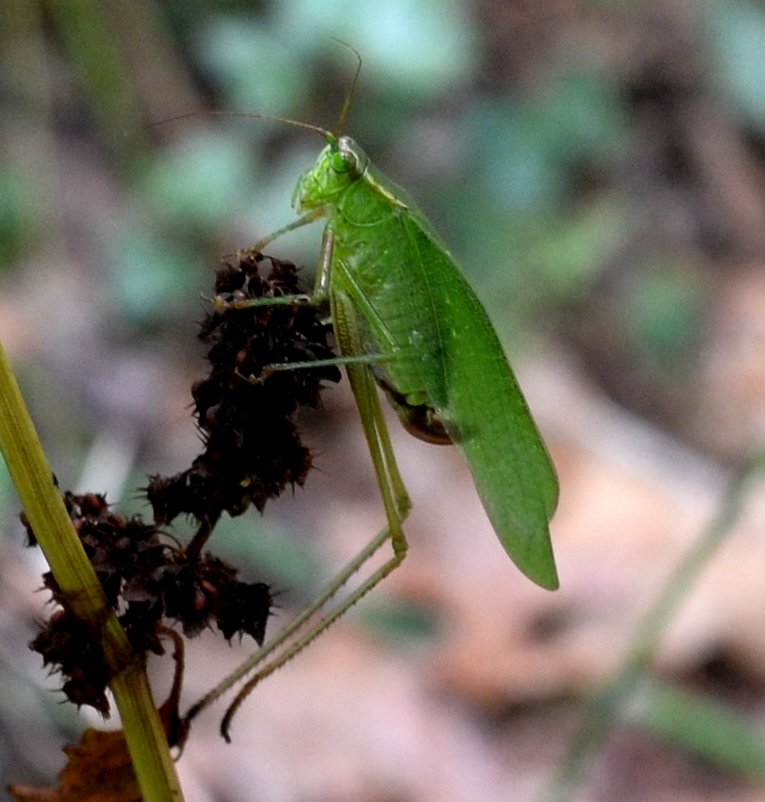
It was a good week for crab spiders. Here's a northern crab spider in the budding part of a New England aster. The yellow (or goldenrod) crab spider seems to be lying wait for the bees and hoverflies that will be visiting soon! And buried in this thistle flower is a white flower crab spider.
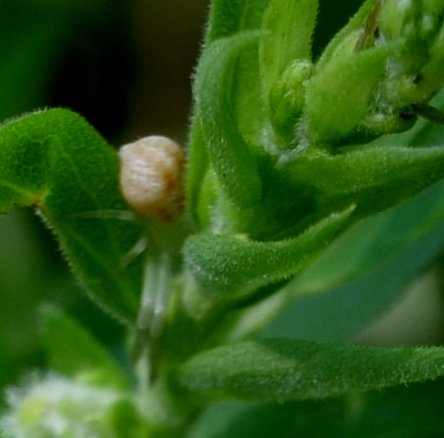
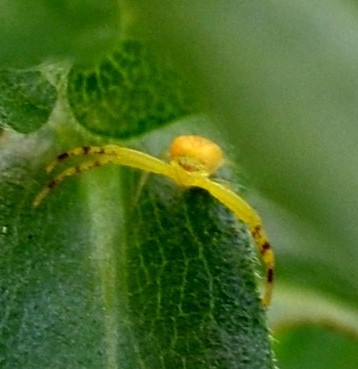
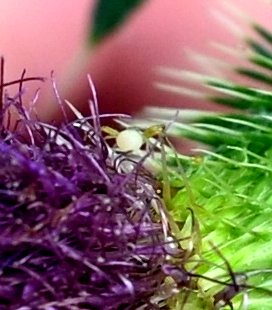
The grass spider in its sheet-like web is hoping someone will come pay it a visit too! And here are two views of one of the cutest little Jumping Spiders in the world! Look at that baby face!

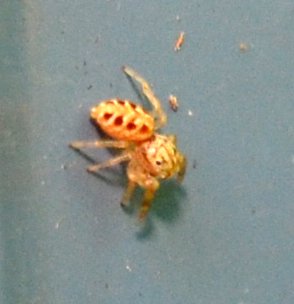
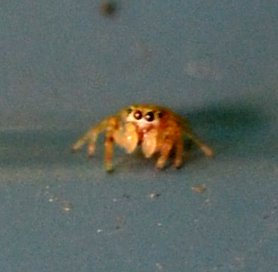
Ah, the wasps! Here is another example of a wasp with a rare "o" face and a happy face on the back. Since I didn't recognize it at first, I took a lot of quick shots. Then I could go back to the books and put it together as Ancistrocerus campestris, one of the "potter wasps", the ones that raise their kids in pots. The third one I can now recognize as a bee wolf, a bee-eating wasp.

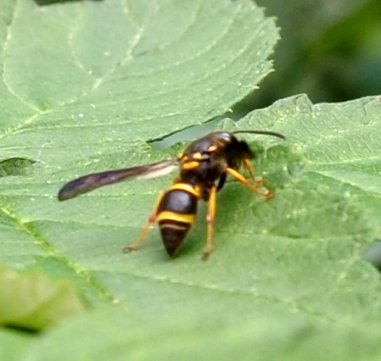
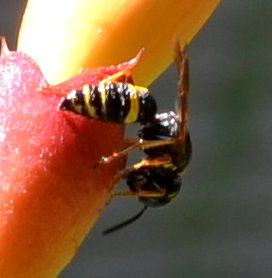
This fellow, recognizable for its comma-shaped bum tattoo, is another potter wasp: totally different shape but still there is is. It is Eumenes fraternus. The next one doesn't have the comma, so it's another species! You remember when I was looking for a good example of a white crab spider. Well, I did it again, not noticing the spider in this picture - I was concentrating on the paper wasp! I don't know if the look on the spider's butt is surprise at seeing us or at staring at the butt of a paper wasp. (Only we know they are not such an aggressive species!)

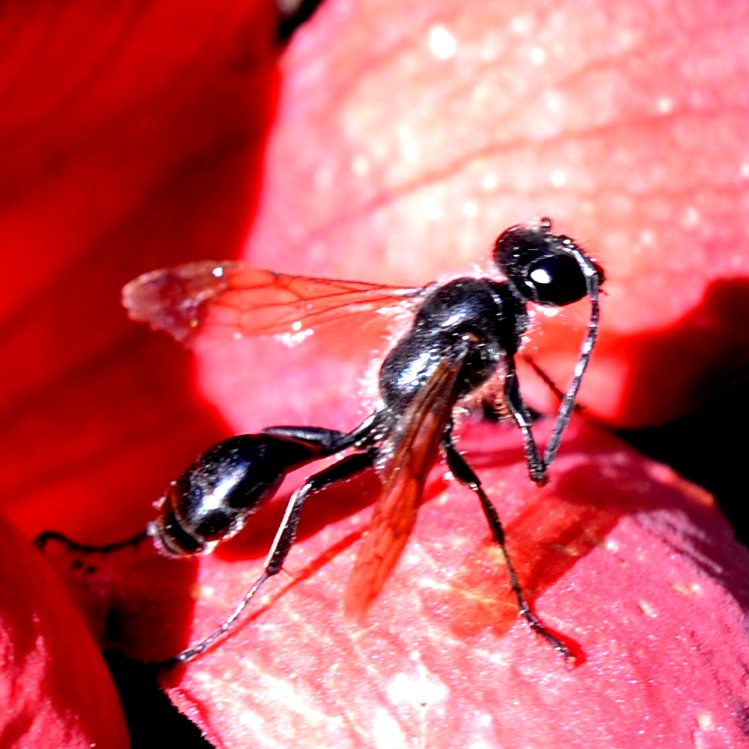
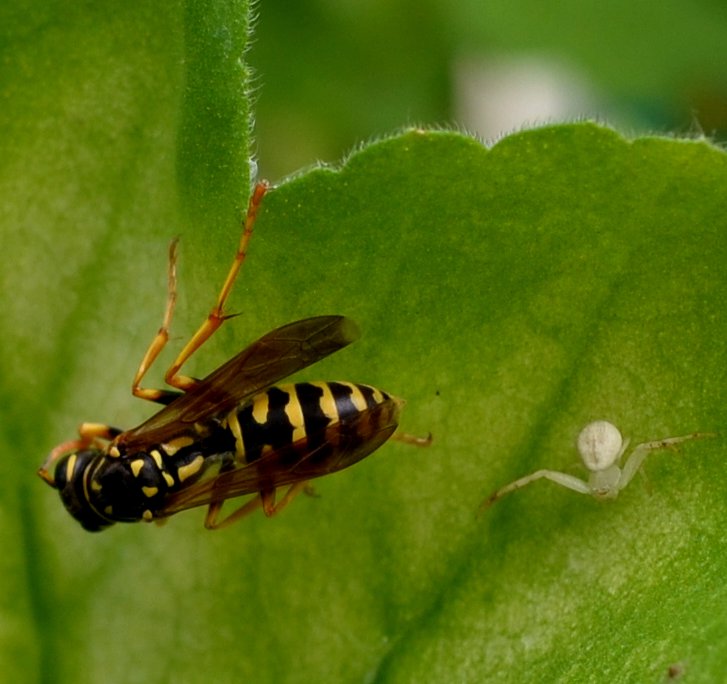
Well, there you have this week's best or at least most interesting! Now for me to get up and go see what the weather has in store for me! Keep cool (or warm, you Antipodeans. Oh, I still remember taking that trip up the West Coast with the Friths - beautiful fresh air, and flowers to the horizon. I don't need to send you any better weather than that!) Till next week! Love!
Back to August 7
On to August 21
Back to 2016 menu
Back to main menu
copyright Martha O'Kennon 2016








































-- Lucilia 8 10 16 1.jpg)

-- Meromyza 8 12 16 13.jpg)
-- Meromyza 8 12 16 14.jpg)






































